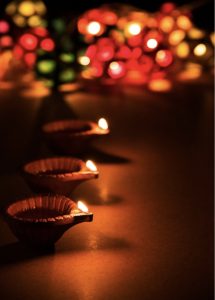
The world is in a constant state of flux, and Shillong is no exception to that. In 1874, the newly built Shillong came to be recognised as the capital city of the Assam province, although not fully equipped with city-like amenities. It lacked power, concrete roads, adequate means of communication and transportation, and water supply. In the town, there was no other mode of transportation other than bullock carts and pony backs.The town area was mostly covered in dense forest, with the exception of a few residential areas. At night, the shrill cries of jackals from the thickets would give the place a ghostly, eerie appearance. Despite these drawbacks, Shillongites of the past began their social lives with religious festivals like DurgaPuja, Kali Puja, and Diwali.
At the very beginning of Shillong city life, the Brahmos (Hindus against Idolatry), being more cultured and advanced, who occupied the high government posts, took lead in forming the society. They were the powerful people who dominated the city life of Shillong, and as a result, this Pujahad had less importance in the city. But despite their dominance, Diwali, celebrated as a festival of light, found its place in the hearts of Brahmo women and others alike. The turning point came in 1896, when Diwali had come to be an integral part of Kali Puja, evolving from traditional diyas to candles and gas lamps.
When the renowned poet Laureate Rabindranath Tagore first travelled to Shillong in October 1919, the city lacked electricity. When the sun sank, it would be completely black. The eerie and terrifying darkness was caused by the newly founded Shillong Municipality’s irregular illumination of acetylene gas lamps around the town! At night, the only sources of light were candles or kerosine lamps (lanterns), open mashals. It has been noted that Tagore, who would visit his summer house in Shillong, was able to cope rather well with this hardship.
As a member of the Brahmo community, Tagore also respected Diwali as a magnificent celebration of victory against gloom. On October 23, 1919, during Diwali, while staying at the Brookside Complex in Shillong, he wrote his little friend “Ranu” a birthday card in which he explained the festival’s significance as a victory over all immorality, filth, and narrowness and bestowed upon her the blessing of being free from both. Though Tagore meant the message simply for Ranu, it is a universal message!
Days had passed, and Diwali celebrations now incorporated crackers and other decorations, but Shillong was still without electricity. On Wednesday, October 17, 1923, the day of Mahasthami(Durga Puja), the city of Shillong unexpectedly and astonishingly burst into electric lights, overcoming the darkness! All around the city, there were cries of jubilation! Dr. Bidhan Chandra Roy, the former chief minister of West Bengal, was the primary architect of the project. At the time, Roy was a medical student and would stay in Kench’s Trace, Shillong.The year 1923 witnessed a historic Diwali in Shillong with electric lighting; nowadays, electricity is an absolute necessity for day-to-day existence.
Today, Diwali in Shillong transcends religious boundaries, illuminating every corner of the city. The once dark ‘Brookside Complex’ of 1919 now gleams with electric light, symbolising the festival’s universality.
Thus, it is evident that Diwali is not exclusive to any one faith. It is a worldwide event that celebrates light that triumphs darkness, truth surpassing lies, and immortality surpassing mortality. It is a component of Kali Puja, of course, as universality is the foundation of Sanatan Dharma. In the present times, Diwali is cementing Indian identity globally and becoming a global celebration.
Hence, Diwali celebrations are no longer limited to India, where they originated. Due to the festival’s universality—which declares the triumph of good over evil and light over darkness—it has evolved into an international event that embodies the eternal (Sanatan) sentiments of ancient India! Shillong is shining today thanks to electricity, and 2023 marks the city’s 100th anniversary of it’s electrification—though the department hasn’t celebrated the occasion yet. It would be commendable to celebrate the day to commemorate the old history of Shillong.
*****
Ref:- (L) Dr. Basudeb Datta Roy. (History of Shillong)
(L) Prof. Shyamadas Bhattacharjee. (Shillong-er Bangali)
(L) Sunirmal Datta Chaudhury
Shri D. P. Bhattacharya, The Sunday Shillong Times dt. 15th Oct. 2023).



